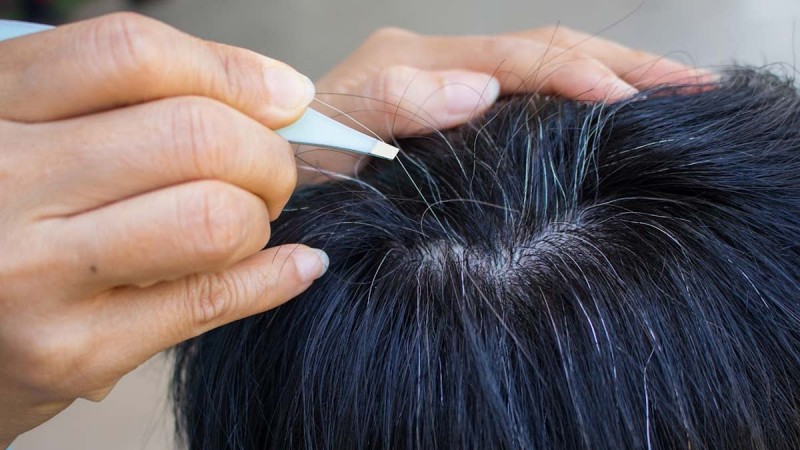
Plucking gray hairs is a common practice among individuals who want to maintain a youthful appearance or simply wish to eliminate those strands that stand out. However, a popular myth suggests that plucking one gray hair will result in the growth of two gray hairs in its place. Let's delve into the truth behind this widely held belief.
Before diving into the myth, it's essential to comprehend how hair grows. Each hair follicle on our scalp undergoes a cycle of growth, rest, and shedding. At any given time, various hairs are in different stages of this cycle.
Plucking Does Not Alter Pigment Production: The color of our hair is determined by pigment-producing cells called melanocytes. As we age, these cells gradually produce less pigment, resulting in the appearance of gray or white hair. Plucking a gray hair does not impact the activity of melanocytes in neighboring follicles.
No Evidence of Multiplication: There is no scientific evidence to support the claim that plucking one gray hair leads to the growth of two in its place. Each hair follicle operates independently, and plucking one hair does not trigger the simultaneous growth of multiple hairs.
Normal Hair Regrowth: When a hair is plucked, it will eventually regrow from the same follicle. However, the regrown hair may not necessarily be gray. It could be pigmented or gray, depending on the individual's genetics and aging process.
While plucking gray hairs may not result in the multiplication of gray hairs, it's worth considering the potential risks associated with this practice:
Follicle Damage: Excessive or aggressive plucking can damage the hair follicle, leading to inflammation or even permanent follicle destruction.
Ingrown Hairs: Plucking can sometimes cause hairs to grow back beneath the skin's surface, resulting in painful and unsightly ingrown hairs.
Scalp Irritation: Constant plucking may irritate the scalp, leading to redness, itching, or even infection.
In summary, the notion that plucking one gray hair leads to the growth of two is simply a myth. Each hair follicle operates independently, and plucking does not alter the fundamental process of hair growth or pigmentation. While plucking gray hairs may be a temporary solution for some, it's essential to weigh the potential risks and consider alternative methods of managing gray hair, such as dyeing or embracing the natural aging process.
Tata-Owned Air India Cuts 180 Jobs, Cites Business Streamlining
Top 10 Wholesale Business Ideas
You can register the location of your home on Google Maps, know the process